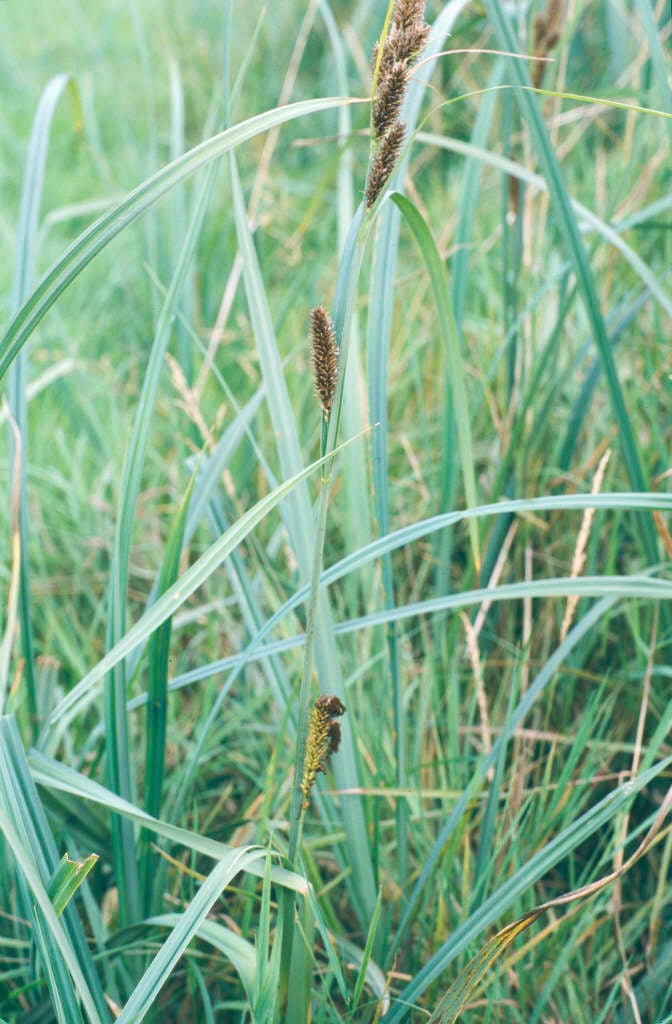Carex riparia
greater pond sedge
A vigorously spreading rhizomatous perennial with linear, glaucous green leaves and tall stems bearing stout, erect, dark brown flowering spikes in early summer

Buy this plant
Size
Ultimate height
1–1.5 metresTime to ultimate height
2–5 yearsUltimate spread
1–1.5 metresGrowing conditions
Moisture
Poorly–drainedpH
Acid, Alkaline, NeutralColour & scent
| Stem | Flower | Foliage | Fruit | |
| Spring | Green Grey Silver | |||
|---|---|---|---|---|
| Summer | Brown | Green Grey Silver | Brown | |
| Autumn | Green Grey Silver | |||
| Winter |
Position
- Full sun
- Partial shade
Aspect
South–facing or West–facing or East–facing
Exposure
Exposed or Sheltered Hardiness
H5Botanical details
- Family
- Cyperaceae
- Native to GB / Ireland
- Yes
- Foliage
- Deciduous
- Habit
- Tufted
- Genus
Carex can be deciduous or evergreen, rhizomatous or tufted perennials, with triangular stems bearing linear or strap-shaped leaves and short or long spikes of tiny green or brown flowers
- Name status
Correct
- Plant range
- Europe to C Asia & S S. Amer.
How to grow
Cultivation
Grow in fertile, moist or wet soil in sun or partial shade. See pond plants and bog gardens for further advice
Propagation
Propagate by seed sown in autumn, or by division from mid-spring to early summer
Suggested planting locations and garden types
- Wildlife gardens
- Wildflower meadow
- Low Maintenance
Pruning
Cut back after flowering
Pests
May be susceptible to aphids
Diseases
Generally disease-free
Love gardening
Sign up to receive regular gardening tips, inspiration, offers and more
View our Privacy Policy
Get involved
The Royal Horticultural Society is the UK’s leading gardening charity. We aim to enrich everyone’s life through plants, and make the UK a greener and more beautiful place.